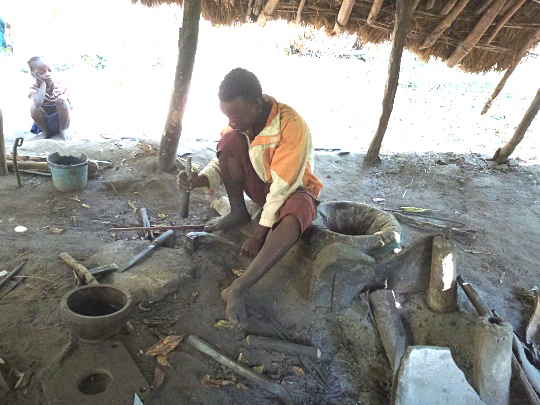-
Posts
23 -
Joined
-
Last visited
Content Type
Profiles
Forums
Articles
Gallery
Downloads
Events
Posts posted by WAGONJON
-
-
Supposed to say spine
-
Frazer, this was in reference to a post I made on another platform (IG) where we were talking about 8670 steel and its ability to be a tough working knife steel.
The kind of knife I'm trying to make is a common bushcraft knife with the ability to withstand batoning and retain utilitarian qualities. Lots of info out there, I realize that. I've found some carbon steels are more prone to chipping than others and am researching carbon steels that are less prone to edge failure. Of course quenching and tempering have a lot to do with it, that is understood. Just gathering information at this time. 1080,1084 are tough steels also. Differential tempering does help to keep a knife more resilient to breaking as you mentioned above. Just was curious about "drawing the edge back" as I have not stumbled across that phrase before. Thank you for your response.
-
Quick question: what does it refer to when "drawing the spine back?"
-
On 04/05/2016 at 0:32 PM, Dave Budd said:
Haha my ugly mug gets everywhere! the bellows in the first picture were my mark ones and have been replaced since then, but the idea kiss the same.
The pot is just that. I've used hollowed out logs, wooden half barrels and even plastic buckets. In Africa some of the larger ones are built in place from clay and in India from old ceramic pots. The skin is normally goat but calf skin and sealed canvas also work (I used a damaged plastic tent with the buckets). The valve can be a flap in the pot or a hole in the skin, some have the skin folded in such a way as to allow them to close on pushing yet open when lifted.
They are dead simple to make!
You've got an ugly mug?! Any close ups of the valving to help me see more clearly as to their air operation? How does the air stay in and not get expelled out?
-

Like this one to his left hip or the photo above
-
Im sure there has been talk about the African pot bellows here in the past. My question is how to make one. Anyone have a link to how they are made? Thanks!
-
Looks like I have a new project to accomplish! Your vice looks like it would work great!!
-
If it is an old vice, it is usually a good quality despite country of origin. Of course if it is made here in the USA, we're especially proud of it due to the fact that we have been sold out to other countries manufacturing goods and importing them here.
-
Yeah nope!! Pipe dream for sure. For that kind of money it better be gold plated studded with diamonds!!
-
Super score for 300! Im still looking for one! Rail road track is my anvil for now until I find a real anvil!
-
-
Thanks for everyone's input especially the correctional officers. Now I know, albeit the hard way, that forging is a dirty word except for the actual work area where the hot coals sit...in the forge. Unfortunately the word is not synonymous.
Thanks especially to Frosty for your kind words of affirmation! I will continue to increase my knowledge and take your advice full-heartedly!
-
That thing is awesome! How many people are from Oakland here? I need to hook up with people! LOL
-
Wow! Such a beautiful piece of work! I need to visit your shop. Your only a couple of hours from me down hwy 80.
-
Some beautiful things are still make in Oakland! Very inspirational! Have you used it yet?
-
Very well made especially the bolster! Have you used it yet?
-
3 minutes ago, Buzzkill said:
Please start here if you are interested in knife making and get back to us after you've done a bit more reading on the forum. Your question isn't quite as specific as you think it is. Making knives is far from starting simple.
New knife maker?
Thank you, will do!!
-
Good morning to everyone here at some point or another! New to this forum and new to the forging and blacksmithing world. I have an innate desire to make things from racecars to bone and stone objects! I'm enamored by how much a person can make from heating up steel and shaping it into a desired object; knife, hammer, axe, and other little doodads.
Now having said all this, I would like to know or be lead to a former post about the most common steels used by forgers. For example, O1 tool steel, 1095, 1080, etc. I looked up in the astm.org steel standards for a list and it gave me a plethora of steels and their uses. I'm looking for the most common and their uses. I like knives and this where I want to start, simple, then work my way to bigger and better things!
Any comments and or leads will be much appreciated!


Bone handled O7 hunter
in Knife Making
Posted
Very beautiful and well made! Just stunning.